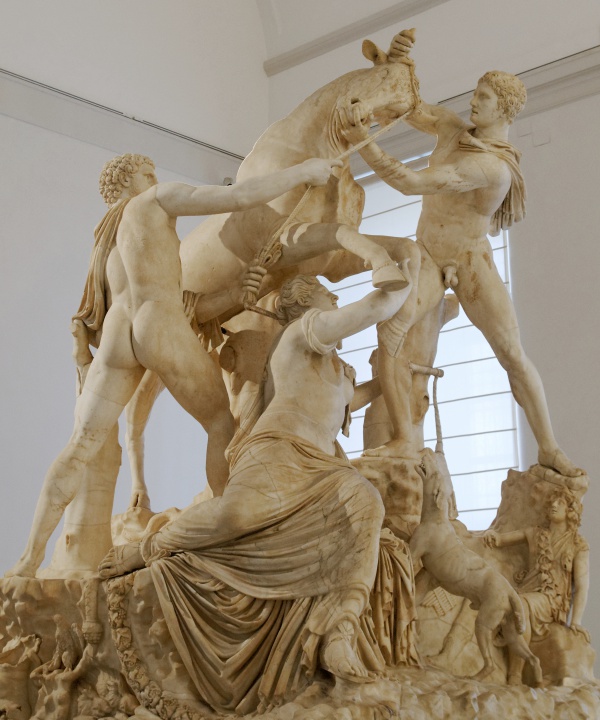Facts About Farnese Bull
The Farnese Bull is an awe-inspiring Roman sculpture, renowned as the largest single piece from ancient times. Originally part of the Farnese collection in Rome, it was relocated to the Museo Archeologico Nazionale Napoli in Naples in 1826. This grand sculpture depicts the myth of Dirce, the first wife of Lykos, King of Thebes, who is tied to a wild bull by Amphion and Zethus. According to Pliny the Elder, the original masterpiece was crafted by Rhodian artists Apollonius of Tralles and Tauriscus.
The sculpture was unearthed in 1546 during excavations at the Baths of Caracalla in Rome and is believed to date back to the Severan period. Over the centuries, it has undergone various restorations. Interestingly, Michelangelo once had plans to incorporate it into a fountain. Carved from a single block of marble, the original sculpture measures 3.66 meters by 2.75 meters and weighs an impressive 21.8 tonnes. Scholars still debate whether the sculpture mentioned by Pliny is indeed the Farnese Bull.
This remarkable piece has also appeared in various works of art, including the film "Journey to Italy." Known for its enormous size and exquisite craftsmanship, it has been extolled by many, with Henry Peacham once declaring that it surpasses all other statues in the world.

 Austria
Austria